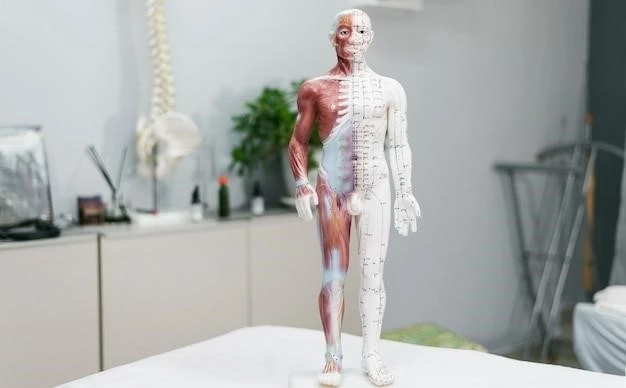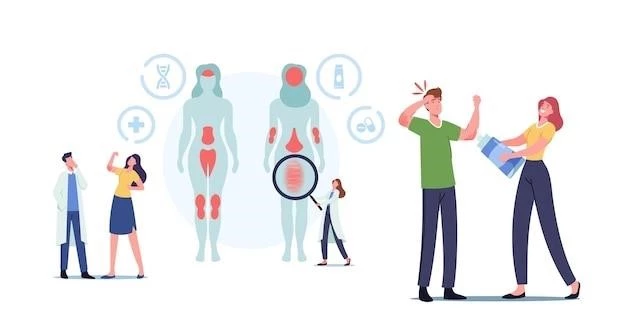Disease ー Limb-Body Wall Complex
Limb-Body Wall Complex is a rare and severe fetal malformation. This article will dive into the causes‚ types of abnormalities‚ prenatal diagnosis‚ treatment options‚ surgical interventions‚ and long-term prognosis associated with this condition.
Introduction to Limb-Body Wall Complex
Limb-Body Wall Complex is a rare and devastating condition characterized by severe fetal anomalies. It involves a combination of thoracic and abdominal defects‚ resulting in a spectrum of malformations that can vary in severity.
The exact etiology of Limb-Body Wall Complex remains unclear‚ with hypotheses suggesting disruptions in early embryonic development leading to the anomalies observed. This condition is not hereditary and occurs sporadically.
Individuals with Limb-Body Wall Complex often exhibit a range of abnormalities affecting the thorax‚ abdomen‚ and limbs. These anomalies can include defects in the chest wall‚ heart‚ diaphragm‚ abdominal organs‚ and the development of limb and body wall structures.
Due to the complexity and severity of the malformations associated with Limb-Body Wall Complex‚ prenatal diagnosis is crucial for appropriate management and treatment planning. Advances in imaging technologies have enabled early detection and evaluation of these anomalies during pregnancy.
Management of Limb-Body Wall Complex typically involves a multidisciplinary approach‚ including genetic counseling‚ maternal-fetal medicine specialists‚ neonatologists‚ pediatric surgeons‚ and other healthcare professionals. Treatment strategies aim to address the specific needs of the affected fetus and optimize outcomes.
Despite the challenges posed by Limb-Body Wall Complex‚ ongoing research and advancements in medical care offer hope for improved prognoses and quality of life for affected individuals. Understanding the complexities of this condition is essential for providing comprehensive care and support to both patients and their families.
Causes and Risk Factors
The exact etiology of Limb-Body Wall Complex‚ a rare and severe fetal malformation‚ remains elusive. While specific causes are not definitively established‚ various theories suggest disruptions in early embryonic development leading to the complex anomalies observed in affected fetuses;
Potential risk factors for Limb-Body Wall Complex may include maternal age‚ environmental factors‚ and possible genetic predispositions‚ although no clear causal links have been confirmed. Maternal lifestyle choices and exposures during pregnancy could play a role in the development of this condition‚ underscoring the importance of prenatal care and environmental awareness.
Given the sporadic nature of Limb-Body Wall Complex‚ it is not typically associated with a familial or hereditary pattern. The lack of a clear genetic component suggests that most cases arise from multifactorial influences during early fetal development.
Advancing research in the field of developmental biology and genetics may provide further insights into the underlying mechanisms of Limb-Body Wall Complex‚ potentially elucidating key factors contributing to its pathogenesis. Continued investigation into the causes and risk factors associated with this condition is essential for enhancing diagnostic capabilities and developing targeted interventions.
Understanding the complex interplay of genetic‚ environmental‚ and developmental factors influencing the occurrence of Limb-Body Wall Complex is vital for improving risk assessment‚ genetic counseling‚ and preventive strategies for individuals and families affected by this challenging condition.
Types of Abnormalities Associated with Limb-Body Wall Complex
Limb-Body Wall Complex encompasses a spectrum of severe abnormalities affecting multiple organ systems in affected fetuses. These anomalies predominantly involve the thoracic and abdominal regions‚ resulting in a range of malformations that can vary in complexity and impact on overall health and development.

Thoracic abnormalities associated with Limb-Body Wall Complex may include defects in the chest wall resulting in incomplete closure‚ which can impact lung development and respiratory function. Congenital heart malformations‚ such as septal defects or abnormal heart positioning‚ are also commonly observed in affected individuals‚ contributing to significant morbidity and mortality.
Abdominal anomalies in Limb-Body Wall Complex encompass a variety of malformations involving the abdominal wall‚ liver‚ intestines‚ and other intra-abdominal structures. Defects in the closure of the abdominal cavity can lead to herniation of organs outside the body wall‚ posing challenges for surgical management and long-term outcomes.
Limb abnormalities are a hallmark feature of Limb-Body Wall Complex‚ characterized by underdeveloped or distorted limb structures attached directly to the body wall. These limb anomalies can vary in severity‚ with some fetuses exhibiting limb deficiencies or complete absence of limbs‚ further complicating the overall prognosis and management of the condition.
Other associated abnormalities in Limb-Body Wall Complex may involve neural tube defects‚ genitourinary malformations‚ and central nervous system anomalies‚ reflecting the complex nature of this condition and its multi-system effects. Comprehensive evaluation and monitoring of these diverse abnormalities are essential for determining appropriate treatment strategies and optimizing outcomes for affected individuals.
Prenatal Diagnosis
Prenatal diagnosis of Limb-Body Wall Complex plays a critical role in evaluating the extent of fetal anomalies‚ guiding treatment decisions‚ and providing expectant parents with essential information for informed decision-making. Advances in imaging modalities have significantly enhanced the ability to detect and characterize the complex abnormalities associated with this rare condition.
Ultrasound imaging is typically the primary tool used for the prenatal diagnosis of Limb-Body Wall Complex. High-resolution ultrasound scans can reveal structural abnormalities in the thoracic‚ abdominal‚ and limb regions‚ allowing healthcare providers to assess the severity and impact of the malformations on fetal well-being.
In cases where additional information is needed‚ advanced imaging techniques such as magnetic resonance imaging (MRI) may be employed to provide further details about the extent of anatomical anomalies present in the fetus. MRI can offer a more comprehensive evaluation of soft tissue structures and aid in treatment planning by delineating the complexities of the malformations.
Genetic testing may also be recommended as part of the prenatal diagnostic process for Limb-Body Wall Complex. Chromosomal analysis and genetic consultation can help identify underlying genetic factors that may contribute to the development of complex fetal anomalies‚ offering valuable insights into the etiology of the condition.
Multidisciplinary collaboration between obstetricians‚ maternal-fetal medicine specialists‚ radiologists‚ geneticists‚ and other healthcare professionals is essential for the comprehensive assessment and management of Limb-Body Wall Complex during the prenatal period. Timely and accurate diagnosis is vital for initiating appropriate interventions‚ providing parental counseling‚ and ensuring optimal care for both the fetus and expectant parents.
Treatment Approaches
The management of Limb-Body Wall Complex requires a comprehensive and individualized approach tailored to the specific needs of each affected fetus. Treatment strategies focus on addressing the complex anomalies affecting the thoracic‚ abdominal‚ and limb structures‚ with the primary goal of optimizing outcomes and quality of life for the newborn.
In cases where severe thoracic abnormalities are present‚ respiratory support and interventions may be necessary to ensure adequate breathing function in the affected fetus. Neonatal specialists and pediatric surgeons collaborate to address respiratory distress and support lung development through appropriate medical interventions.
Surgical interventions play a crucial role in the management of abdominal anomalies associated with Limb-Body Wall Complex. Procedures aimed at repositioning and repairing herniated organ structures‚ closing abdominal wall defects‚ and managing gastrointestinal complications are often performed to improve the long-term prognosis of the affected neonate.
The management of limb abnormalities in Limb-Body Wall Complex may involve reconstructive surgeries‚ prosthetic interventions‚ and physical therapy to optimize limb function and mobility. Orthopedic specialists work closely with the medical team to address limb deficiencies and support the overall development of motor skills in the affected child.
Supportive care and multidisciplinary follow-up are essential components of the treatment approach for Limb-Body Wall Complex. Ongoing monitoring‚ rehabilitation services‚ genetic counseling‚ and psychosocial support are critical for addressing the complex needs of both the child and their family throughout the treatment journey.
The coordination of care among diverse healthcare professionals‚ including neonatologists‚ pediatric surgeons‚ geneticists‚ rehabilitation specialists‚ and mental health professionals‚ is vital for providing holistic and effective treatment for individuals with Limb-Body Wall Complex. By embracing a collaborative and patient-centered approach‚ healthcare teams can offer comprehensive care that addresses the physical‚ emotional‚ and developmental aspects of this challenging condition.
Surgical Interventions
Surgical interventions play a pivotal role in the management of Limb-Body Wall Complex‚ aiming to address the complex anatomical abnormalities present in affected neonates and improve their overall prognosis. A multidisciplinary team of pediatric surgeons‚ neonatal specialists‚ and other healthcare professionals collaborates to develop comprehensive surgical plans tailored to the specific needs of each individual.
For cases involving thoracic anomalies‚ surgical procedures may focus on repairing defects in the chest wall‚ stabilizing the rib cage‚ and optimizing lung function. Techniques such as chest wall reconstruction‚ diaphragmatic repairs‚ and tracheostomies may be performed to enhance respiratory capacity and promote adequate breathing in neonates with severe thoracic malformations.
Abdominal surgeries are often necessary to address herniated organs‚ abdominal wall defects‚ and gastrointestinal complications in infants with Limb-Body Wall Complex. Surgical interventions aim to reposition misplaced organs‚ close abdominal wall openings‚ and ensure proper abdominal cavity closure to prevent further complications and optimize gastrointestinal function.
The management of limb abnormalities may involve reconstructive surgeries‚ amputation procedures‚ or the utilization of prosthetic devices to address limb deficiencies and improve functional outcomes. Orthopedic surgeons work closely with the healthcare team to develop individualized treatment plans that support the proper alignment‚ mobility‚ and development of limb structures in affected neonates.
Complex cases of Limb-Body Wall Complex may require staged or multidisciplinary surgical approaches to address multiple anomalies and optimize overall outcomes. Careful preoperative planning‚ intraoperative coordination‚ and postoperative monitoring are essential components of successful surgical interventions for individuals with this challenging condition.
Long-term follow-up and rehabilitation services are integral parts of the surgical management of Limb-Body Wall Complex‚ ensuring ongoing support for the physical‚ developmental‚ and emotional needs of affected children and their families. By leveraging surgical expertise‚ innovative techniques‚ and a multidisciplinary care approach‚ healthcare teams can improve the quality of life and functional outcomes for individuals living with this rare and complex condition.
Long-term Prognosis
The long-term prognosis for individuals with Limb-Body Wall Complex is influenced by the extent and severity of the structural abnormalities present at birth‚ the effectiveness of treatment interventions‚ and the presence of associated complications that may impact overall health and development. Due to the complexity and variability of this condition‚ prognostic outcomes can vary widely among affected individuals.
Survival rates and quality of life outcomes for neonates with Limb-Body Wall Complex are significantly influenced by the presence of critical thoracic and abdominal malformations‚ such as cardiac defects‚ diaphragmatic hernias‚ and lung underdevelopment. Prompt diagnosis‚ timely interventions‚ and access to specialized healthcare resources play crucial roles in determining the long-term prognosis for affected individuals.
The presence of limb abnormalities in Limb-Body Wall Complex can also impact long-term functional outcomes and quality of life. Surgical interventions‚ prosthetic support‚ and rehabilitative services are essential components of optimizing limb function and mobility‚ enhancing the independence and overall well-being of individuals living with this condition.
Neurodevelopmental outcomes in individuals with Limb-Body Wall Complex may be affected by the presence of neural tube defects‚ central nervous system anomalies‚ and other neurological complications. Early intervention services‚ neurodevelopmental monitoring‚ and multidisciplinary support are vital for promoting cognitive‚ motor‚ and adaptive skills development in affected children.
Genetic counseling and family support services are integral components of the long-term management of Limb-Body Wall Complex‚ providing information‚ guidance‚ and emotional support to families navigating the challenges of caring for a child with this rare and complex condition. Ongoing medical follow-up‚ psychosocial support‚ and educational resources are essential for fostering resilience and well-being in both the affected individual and their family members.
While Limb-Body Wall Complex poses significant challenges and uncertainties‚ advancements in medical care‚ surgical techniques‚ and multidisciplinary collaboration offer hope for improved long-term prognoses and quality of life outcomes for individuals living with this rare and multifaceted condition. By embracing a holistic and patient-centered approach to care‚ healthcare teams can continue to enhance the long-term outlook and overall well-being of individuals affected by Limb-Body Wall Complex.
